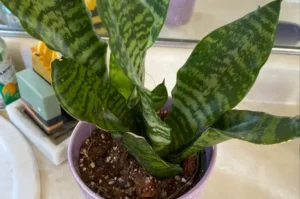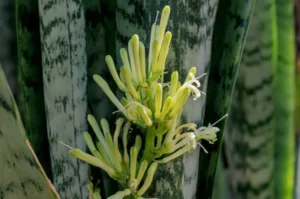Snake plants, also known as Sansevieria, are popular for their upright leaves and ability to survive with minimal care. But when it’s time to repot or propagate, a common question comes up: how deep do snake plant roots actually grow?
This article will give you a clear understanding of snake plant root depth, structure, and how to care for the root system for better plant health and growth.
The Root System of a Snake Plant
Snake plants grow from rhizomes, which are thick underground stems that spread horizontally and send up new shoots. These rhizomes produce roots that are short, strong, and help store water, making them well-suited for dry conditions.
Key Characteristics of Snake Plant Roots:
- Shallow Depth: Most roots stay within the top 6 to 12 inches of soil.
- Horizontal Growth: Roots spread outward rather than growing deep.
- Storage Function: Thick roots hold water and nutrients.
- Rhizome Expansion: Rhizomes give rise to new leaves and sections of the plant.
How Deep Do They Really Grow?
In general, snake plant roots grow about 6 to 12 inches deep. While they don’t go very deep into the soil, they do extend sideways, often reaching the edges of the container. This makes them perfect for wide, shallow pots rather than deep ones.
Typical Depth Based on Plant Size:
| Snake Plant Size | Approx. Root Depth |
| Small (under 1 foot) | 2–4 inches |
| Medium (1–2 feet) | 4–8 inches |
| Large (2–3 feet or more) | 6–12 inches |
Does the Pot Size Affect Root Growth?
Absolutely. While the roots don’t grow very deep, they will spread as far as the pot allows. If the container is too small, the plant may become root-bound, limiting growth. If it’s too deep, excess soil may trap moisture and lead to root rot.
Best Pot Choice for Snake Plants:
- Depth: 8 to 12 inches is usually enough.
- Width: Choose a pot slightly wider than the base of the plant.
- Drainage: Ensure the pot has good drainage holes at the bottom.
Problems with Deep or Tight Roots
When snake plant roots grow in limited space for too long, they may become root-bound. While this isn’t immediately harmful, it can lead to poor soil aeration and water retention problems.
Signs of Root Issues:
- Roots coming out of the drainage holes
- Soil drying too fast
- Plant leaning or unstable
- Slowed growth or yellowing leaves
Repotting every 2–3 years can help avoid these problems and give the roots more room to breathe.
How to Encourage Healthy Root Growth
To keep your snake plant’s roots strong and disease-free, follow these care tips:
1. Use the Right Soil
Choose a well-draining potting mix, like a cactus or succulent blend. Avoid heavy or compacted soil that holds too much water.
2. Water Wisely
Let the soil dry out completely before watering again. Overwatering is the leading cause of root rot.
3. Repot When Necessary
If the plant becomes root-bound or shows signs of stress, repot it into a container one size larger.
4. Avoid Oversized Pots
Large pots retain moisture and can cause rot. Match the pot size to the plant’s root system.
Conclusion
Snake plant roots are shallow but strong. Most grow no deeper than 6 to 12 inches, preferring to spread outward rather than down. This root system makes snake plants ideal for indoor containers with moderate depth and good drainage.
For healthy growth, make sure your snake plant has the right pot size, proper soil, and correct watering habits. Keeping an eye on the root system helps ensure your plant stays healthy and vibrant for years.






